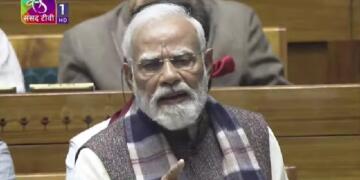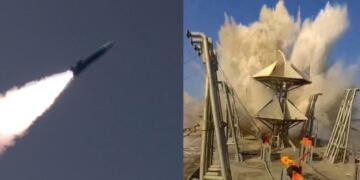In a significant step toward strengthening India’s naval defence, the Extended Range Anti-Submarine Rocket (ERASR), developed entirely in India, has successfully completed user trials. The tests were carried out from INS Kavaratti, one of the Indian Navy’s frontline warships, showcasing the growing strength of the country’s indigenous military technology.
The successful trial marks a major milestone for India’s underwater warfare capabilities. Designed to detect and destroy enemy submarines from extended ranges, ERASR is set to become a powerful addition to the Indian Navy’s arsenal.
Defence Minister Rajnath Singh took to social media to congratulate the Defence Research and Development Organisation (DRDO), the Indian Navy, and industry partners involved in the project.
“The successful induction of this system will significantly enhance the Indian Navy’s strike power,” Singh said in a post on X (formerly Twitter).
Why ERASR Matters
The ERASR is an important asset for anti-submarine warfare. As underwater threats continue to grow in the Indian Ocean Region, this homegrown system gives India a critical edge. It also reflects India’s push for self-reliance in defence production under the Aatmanirbhar Bharat initiative.
With longer-range capability and precision targeting, ERASR is expected to enhance India’s readiness to respond to maritime threats more effectively.
Rising Global Interest in Indian Defence Systems
The announcement follows Defence Minister Rajnath Singh’s remarks at the Controllers’ Conference 2025, held at DRDO Bhawan in New Delhi, where he highlighted increasing international demand for Indian defence equipment.
He credited this surge in interest to Operation Sindoor, during which India effectively demonstrated the performance of its domestically produced weapons and technology.
“The world is now looking at our defence sector. Our soldiers’ bravery and our indigenous equipment showcased during Operation Sindoor have attracted global attention,” Singh said.
He pointed out that global defence spending reached USD 2.7 trillion in 2024, indicating a large market that India can now tap into.
Making the Most of India’s Defence Budget
Rajnath Singh also stressed the need for responsible and strategic use of India’s growing defence budget.
“Our defence budget is larger than the GDP of some countries. That places a huge responsibility on us to spend wisely and with purpose,” he noted.
He emphasized that every rupee spent must serve national interests—through timely deployment, proper planning, and efficient execution.
The Minister also praised the recent decision by the Defence Acquisition Council to allow capital procurements via the GeM (Government e-Marketplace) portal, which will promote transparency and speed in defence purchases.
With the successful testing of ERASR and growing international interest in Indian-made defence equipment, India is strengthening not only its own military capabilities but also its role as a rising player in the global defence market.




























